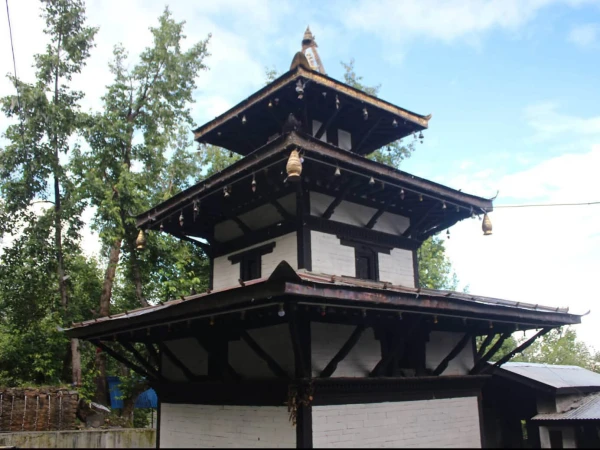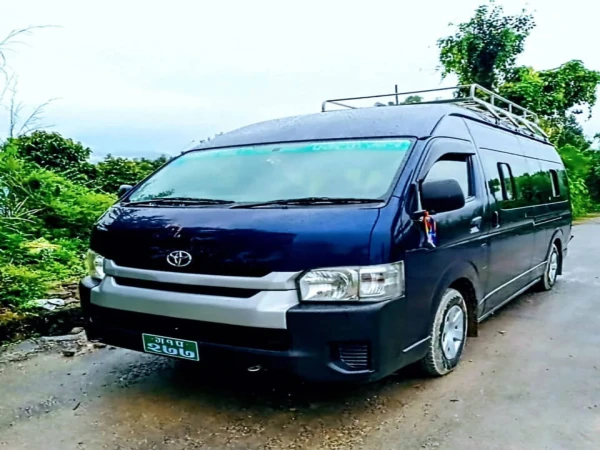The Manaslu Circuit Trek is more than just a walk through the mountains; it's an immersive journey through Nepal's pristine wilderness, rich Tibetan-Buddhist culture, and breathtaking Himalayan vistas. Traversing diverse landscapes from lush subtropical forests to rugged high-altitude deserts, culminating in the challenging Larkya La Pass (5,160m), this trek demands thorough preparation.
At Himalayan Partner, we know that your packing list is not just a collection of items; it's your lifeline. It's the key to ensuring your safety, comfort, and enjoyment amidst the dramatic shifts in weather and terrain. This comprehensive guide goes beyond just gear, delving into vital logistical, safety, and cultural preparations to equip you for your unforgettable Manaslu adventure in 2025.
Understanding Manaslu's Climate: The Foundation of Layering
The Manaslu Circuit presents an incredible spectrum of climates. You could start in warm, humid conditions around 800 meters and ascend to freezing temperatures and snow at over 5,000 meters. This dramatic variation makes adaptable layering the cornerstone of your packing strategy.
We, at Himalayan Partner, always emphasize the importance of the three-layer system (base, mid, outer) because it allows you to regulate your body temperature effectively. Prioritize moisture-wicking, quick-drying, and breathable fabrics like merino wool or quality synthetics that keep you warm even when wet.
Essential Clothing: Step-by-Step for Every Layer
Choosing the right apparel is paramount for comfort and safety on the Manaslu Circuit.
Clothing Essentials for Manaslu Circuit Trek
|
|
|
|
|
|
|
|
|
|
|
|
|
|
|
|
|
|
|
|
|
|
|
|
|
|
|
|
|
|
|
|
|
|
|
|
|
|
|
|
|
|
|
|
|
|
|
|
|
|
|
|
|
|
|
|
|
|
|
|
Detailed Breakdown:
Base Layers (Next to Skin)
- 2-3 pairs of Thermal Tops & Bottoms: Lightweight, moisture-wicking, and quick-drying. Merino wool or good quality synthetic are ideal.
- Moisture-Wicking Underwear: 3-5 pairs, quick-drying.
Mid-Layers (Insulation)
- 1-2 Fleece Jackets: Medium-weight fleece for warmth, easy to layer.
- 1 Light Insulated Jacket: Synthetic or light down, for cooler evenings.
Outer Layers (Protection from Elements)
- 1 Waterproof & Windproof Shell Jacket: (Gore-Tex or similar) Essential for rain, snow, and strong winds.
- 1 Waterproof & Windproof Shell Pants: Lightweight and breathable.
- 1 Very Warm Down Jacket: Crucial for cold evenings, early mornings, and high altitudes, especially around Larkya La Pass. Based on our experience, look for one rated for -15°C to -25°C (5°F to -13°F) depending on your trekking season.
Trekking Bottoms
- 2 pairs of Lightweight, Quick-Drying Trekking Pants: Durable and comfortable. Convertible pants (zip-off legs) offer versatility.
- Optional: 1 pair of quick-drying trekking shorts for lower elevations during warmer months.
- 1 pair of Comfortable Camp Pants/Leggings: For relaxing in tea houses.
Socks & Sleepwear
- 3-4 pairs of Moisture-Wicking Trekking Socks: Merino wool or synthetic, various thicknesses.
- 2-3 pairs of Warm Thermal Socks: For cold nights and high-altitude trekking days.
- Lightweight Sleepwear: Comfortable base layers are often sufficient.
Footwear: Your Most Important Investment
Your feet are your foundation on the trek. Do not compromise on footwear!
Essential Footwear for Manaslu Circuit Trek
|
|
|
|
|
|
|
|
|
|
|
|
|
|
|
|
|
|
|
|
Detailed Breakdown:
Sturdy, Waterproof Hiking Boots
- Features: Good ankle support, excellent grip, and waterproof (e.g., Gore-Tex lining).
- Crucial Tip from Himalayan Partner:Break in your new hiking boots thoroughly with short walks before your trek to prevent painful blisters on the trail.
- Camp Shoes/Sandals: Lightweight and breathable for relaxing in tea houses after a long day.
Crucial Footwear Additions:
- Microspikes / Ice Cleats: Highly recommended, especially if trekking in late autumn, winter, or early spring when icy patches are common on the high pass. Your Himalayan Partner guide can advise on conditions.
- Gaiters: Useful for keeping snow, mud, and debris out of your boots, particularly in winter or monsoon seasons.
Backpacks, Bags & Sleeping Gear
Managing your gear efficiently is key to a comfortable trek.
Backpacks & Sleeping Gear Essentials
|
|
|
|
|
|
|
|
|
|
|
|
|
|
|
|
|
|
|
|
|
|
|
|
|
|
|
|
Critical Accessories & Equipment
These small items make a big difference in functionality and safety.
Trekking Accessories & Equipment
|
|
|
|
|
|
|
|
|
|
|
|
|
|
|
|
|
|
|
|
|
|
|
|
|
|
|
|
|
|
|
|
|
|
|
|
|
|
|
|
|
|
|
|
|
|
|
|
|
|
|
|
|
|
|
|
|
|
|
|
Health, Hygiene & Safety Essentials
Prioritizing your health and safety is paramount on any high-altitude trek.
Health, Hygiene & Safety Essentials
|
|
|
|
|
|
|
|
|
|
|
|
|
|
|
|
|
|
|
|
|
|
|
|
|
|
|
|
|
|
|
|
|
|
|
|
|
|
|
|
|
|
|
|
|
|
|
|
|
|
|
|
Detailed Breakdown:
Comprehensive First Aid Kit (Your Foundation for Safety!)
- Blister Care Kit: Moleskin, hydrocolloid pads, athletic tape (e.g., zinc oxide tape).
- Medications: Pain relievers (Paracetamol, Ibuprofen), anti-diarrheal medication (e.g., Loperamide/Imodium, Pepto-Bismol), antiseptic cream, cough lozenges, eye drops, rehydration salts.
- Bandages, gauze pads, medical tape, small scissors, tweezers.
- Personal Prescription Medications: Carry enough for the entire trek, along with a copy of your prescription and doctor's note if necessary.
- Altitude Sickness Medication: (e.g., Diamox) Consult your doctor before your trip and discuss this with Himalayan Partner for guidance.
Sun & Insect Protection
- High SPF 50+ Sunscreen: Apply generously and reapply frequently, especially at altitude where UV radiation is intense.
- Lip Balm with High SPF: Prevents chapped and sunburnt lips.
- Insect Repellent: Especially important for lower elevations and during the monsoon season.
Personal Hygiene Items
- Quick-Drying Travel Towel: Lightweight and compact.
- Biodegradable Soap/Shampoo: To minimize environmental impact in the pristine conservation area.
- Wet Wipes/Baby Wipes: Invaluable for quick clean-ups when showers are scarce or cold.
- Hand Sanitizer: Essential for hygiene, especially before meals.
- Toothbrush, toothpaste, small mirror, nail clippers.
- Feminine hygiene products (if applicable, carry enough as availability is limited).
Beyond the Packing List: Vital Trek Preparations
While gear is important, these logistical and safety aspects are crucial for a smooth and legal trek. As your trusted Himalayan Partner, we guide you through every step of this process.
Mandatory Permits & Documentation
The Manaslu Circuit falls within a restricted area, necessitating specific permits. Himalayan Partner will handle the application process for these on your behalf when you book with us:
- Manaslu Restricted Area Permit (MRAP): This is the most crucial. It must be obtained through a registered Nepali trekking agency and requires a minimum group of two trekkers plus a licensed guide. Solo trekking is strictly prohibited.
- Manaslu Conservation Area Permit (MCAP): Required for entry into the Manaslu Conservation Area.
- Annapurna Conservation Area Permit (ACAP): Required as the trek eventually joins the Annapurna region trail.
- Documents for Permits: Ensure you have your valid passport (with at least 6 months validity beyond your return date), a valid Nepal visa, extra passport-sized photos, and both physical and digital copies of all these documents.
Comprehensive Travel Insurance: Your Safety Net
- Absolute Necessity: Travel insurance is not optional for the Manaslu Circuit Trek. Himalayan Partner insists that your policy must cover high-altitude trekking (up to 5,500m or higher) and, crucially, emergency helicopter evacuation and rescue – this is paramount. The remote nature of the trek means quick medical assistance might only be possible by air. Review your policy details carefully before you depart.
Financial Planning: Money on the Trail
- Nepali Rupees is King: Carry sufficient Nepali Rupees in smaller denominations.
- No ATMs on the Trail:Be aware: There are NO ATMs on the Manaslu Circuit trek route once you leave the initial starting points like Soti Khola or Arughat. Withdraw all necessary cash in Kathmandu before you begin.
- Budget for Extras: Factor in money for hot showers, device charging (often paid per hour/device), soft drinks, snacks, and tips for your guide and porters.
Acquiring Your Gear in Nepal
- Kathmandu as a Trekking Hub: Kathmandu (especially the Thamel area) is an excellent place to buy or rent trekking gear. You'll find a wide range of options from local Nepali brands (like Sherpa Adventure Gear) to international ones.
- Renting Gear: Renting is a cost-effective alternative for items like down jackets and sleeping bags, especially if you trek infrequently. Himalayan Partner can also advise on reliable rental shops.
- Importance of Quality: From our experience, we emphasize the importance of investing in reliable, high-quality gear, as replacements or repairs are virtually impossible once you're on the remote trail.
Adapting Your Packing for Manaslu's Seasons
While the core list remains, adjust your gear for optimal comfort and safety depending on when you trek. Himalayan Partner can advise on the best season for your trek goals.
- Spring (March-May) & Autumn (Sept-Nov): These are the most popular seasons. Expect clear skies and moderate temperatures, but always be prepared for cold nights and possible snow at higher elevations.
- Summer / Monsoon (June-August): Be prepared for rain, humidity, and potentially muddy trails. Essential additions include excellent waterproofs, gaiters, leech socks, and robust insect repellent. Views can be obscured by clouds.
- Winter (Dec-Feb): This is the coldest period with significant snowfall, especially at higher altitudes and around Larkya La Pass. Necessitates heavier down jackets, warmer sleeping bags (e.g., -25°C), crampons or microspikes for challenging sections, and more robust thermal layers. Some parts of the pass might be inaccessible.
Optional Items & Comfort Enhancers
These additions can make your trek more enjoyable.
|
|
|
|
|
|
|
|
|
|
|
|
|
|
|
|
|
|
|
|
|
|
|
|
|
|
|
|
Pre-Trek Physical & Mental Preparation
While not a packing item, your personal preparation is key to success on the Manaslu Circuit. Himalayan Partner recommends focusing on these areas:
- Physical Fitness: Engage in regular cardiovascular exercise (running, cycling), strength training (legs, core), and practice hiking with a weighted pack weeks or months before your trip.
- Mental Fortitude: The Manaslu Circuit can be physically and mentally demanding. Researching the trek, understanding the challenges, and maintaining a positive mindset are invaluable.
- Acclimatization Strategy: While built into most itineraries, understand the importance of a slow ascent and rest days to help your body adjust to altitude.
Final Tips for a Safe & Memorable Manaslu Trek
- Pack Light, Pack Smart: Every kilogram counts on a long trek. Only bring essentials.
- Stay Hydrated: Drink plenty of water throughout the day, as proper hydration aids acclimatization.
- Respect Local Culture & Environment: Embrace the local Tibetan-Buddhist customs and strictly adhere to "Leave No Trace" principles.
- Listen to Your Body & Your Guide: Pay attention to signs of altitude sickness and always follow your Himalayan Partner guide's advice.
Conclusion: Fully Equipped for Your Manaslu Journey with Himalayan Partner!
Embarking on the Manaslu Circuit Trek is an extraordinary experience that promises breathtaking scenery, profound cultural immersion, and a deep sense of accomplishment. By meticulously preparing with this comprehensive packing list and understanding the vital logistical elements, you'll be well-equipped for a safe, comfortable, and truly unforgettable adventure in the heart of the Himalayas.
Ready to turn your dream into reality? Let Himalayan Partner be your trusted guide. Explore our expertly crafted Manaslu Circuit Trek packages and secure your incredible journey today!
Frequently Asked Questions (FAQs) - Packing list for Manaslu Circuit Trek
Q1: What are the mandatory permits for the Manaslu Circuit Trek?
A1: You need three main permits: the Manaslu Restricted Area Permit (MRAP), the Manaslu Conservation Area Permit (MCAP), and the Annapurna Conservation Area Permit (ACAP). Himalayan Partner assists with all permit applications for trekkers.
Q2: Can I trek the Manaslu Circuit solo?
No, solo trekking is strictly prohibited in the Manaslu Restricted Area. You must trek with a licensed guide and be part of a group of at least two trekkers, a service Himalayan Partner provides.
Q3: Is travel insurance necessary for the Manaslu Circuit Trek?
Yes, comprehensive travel insurance is mandatory. It must specifically cover high-altitude trekking (up to 5,500m+) and emergency helicopter evacuation and rescue, which Himalayan Partner strongly advises.
Q4: Are there ATMs or places to exchange money along the Manaslu Circuit?
No, there are no ATMs on the Manaslu Circuit trek itself once you leave the starting towns like Soti Khola. You must carry sufficient Nepali Rupees (preferably in small denominations) from Kathmandu.
Q5: Where can I buy or rent trekking gear in Nepal?
Kathmandu is the best place to buy or rent trekking gear. Thamel offers numerous shops, and Himalayan Partner can recommend reliable rental shops.
Q6: What temperature rating should my sleeping bag have for Manaslu?
For most seasons, a high-quality sleeping bag rated for at least -10°C to -20°C (14°F to -4°F) is recommended. Colder ratings are needed for winter treks.
Q7: Do I need special footwear like microspikes or gaiters?
Microspikes are highly recommended for icy patches on high passes, especially in spring or late autumn. Gaiters are useful for snowy conditions or during the monsoon to keep mud and debris out of your boots.
Q8: How can I purify water on the Manaslu Circuit Trek?
It's essential to carry water purification tablets, a portable filter (like Lifestraw), or a UV purifier (like Steripen). Tap water or natural sources should always be treated.
Q9: What types of personal hygiene items are essential?
Beyond basic toiletries, pack quick-drying towels, biodegradable soap, wet wipes, hand sanitizer, and lip balm with high SPF, as shower facilities are basic or limited.
Q10: Is it possible to charge electronics on the trek?
Yes, most tea houses offer charging facilities, but they may be limited and often incur an extra charge. A high-capacity power bank is highly recommended.
Q11: What documents do I need for permits?
Generally, you'll need your original passport with a valid Nepal visa, extra passport-sized photos, and photocopies of these documents. Himalayan Partner will guide you through the process.


.webp)


